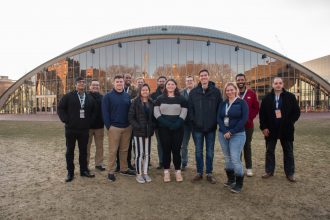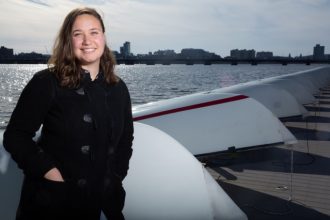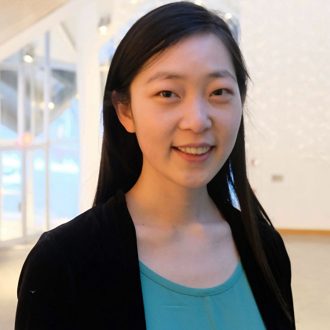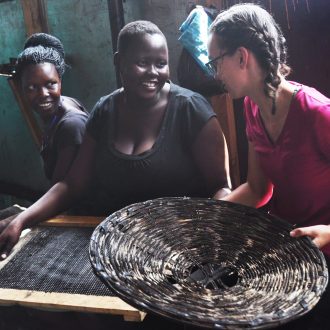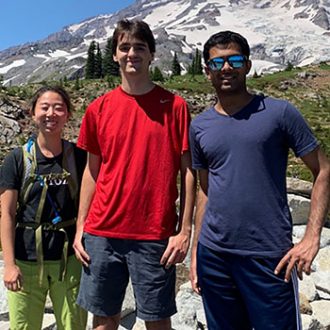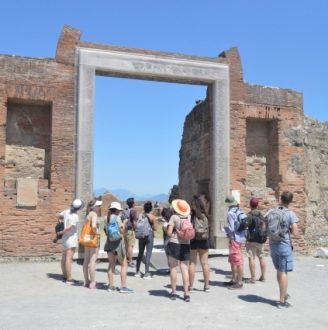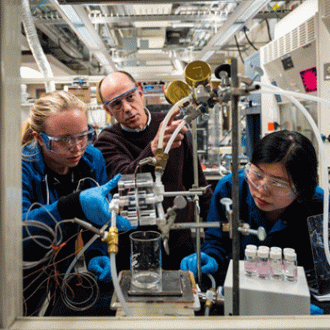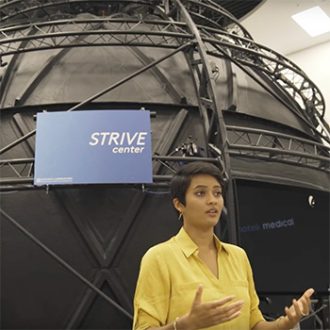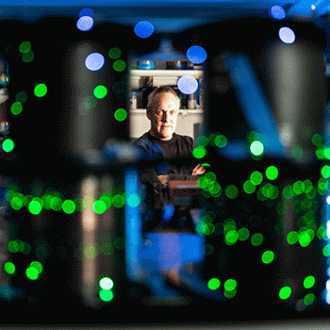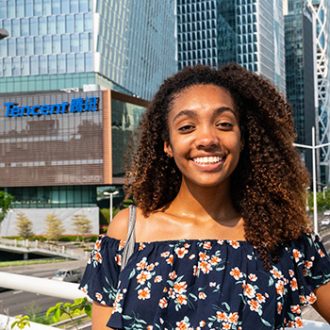Exploring speech recognition with industry experts
Lillian ‘Lilly’ Papalia, a rising junior in mechanical engineering, is enrolled in the New Engineering Education Transformation (NEET)'s Autonomous Machines thread. Her team won the GM/MIT Blacktop Build during MIT’s Independent Activities Period (IAP) and in doing so carried forward a NEET tradition — NEET Autonomous Machines student Sebastian Uribe was among four winners of the first hackathon sponsored by GM during IAP 2018. The challenge in 2020, was to explore how to simulate human and environmental acoustics for speech recognition and performance testing.
The impact of climate change on the ocean
When deciding on a major, one thing was clear for Michelle Kornberg — she didn’t want to be stuck inside for four years. “I like the environment of working on something in the lab, but I grew up in a very outdoorsy family,” she says. “I definitely knew I didn’t want to be inside all the time.”
Demystifying artificial intelligence
Natalie Lao was set on becoming an electrical engineer, like her parents, until she stumbled on course 6.S192 (Making Mobile Apps), taught by Professor Hal Abelson. Here was a blueprint for turning a smartphone into a tool for finding clean drinking water, or sorting pictures of faces, or doing just about anything. “I thought, I wish people knew building tech could be like this,” she said on a recent afternoon, taking a break from writing her dissertation.
Scaling up a cleaner-burning alternative for cookstoves
Mechanical engineering students in MIT D-Lab are working with collaborators in Uganda on a solution for the health hazards associated with wood-burning stoves. For millions of people globally, cooking in their own homes can be detrimental to their health, and sometimes deadly. The World Health Organization estimates that 3.8 million people a year die as a result of the soot and smoke generated in traditional wood-burning cookstoves. Women and children in particular are at risk of pneumonia, stroke, lung cancer, or low birth weight.
An Immersive Experience in Industry
Over the summer, four mechanical engineering graduate students had the opportunity to gain hands-on experience working in industry. Through the recently launched Industry Immersion Project Program (I2P), students were paired with a company and tasked with tackling a short-term project. Projects in this inaugural year for the program came from a diverse range of industries, including manufacturing, robotics, and aerospace engineering.
A New Lens Into the Past
For the fourth summer in a row, 16 rising sophomores visited civilization-spanning structures and monuments in Italy through the Department of Civil and Environmental Engineering’s ONE-MA3 program, which integrates the study of art, architecture, and archaeology. During the three-week field course, which is supported by the AREA3 Association (Associazione per la Ricerca e l'Educazione nell'Arte, Archeologia e Architettura), students conducted research on ancient artifacts and structural materials to inspire new research projects grounded in time, which they explore further in the fall semester in 1.057 (Heritage Science and Technology).
Making It Real
Cloudy beige liquid swirls inside a large bioreactor resembling a French press as Jenna Ahn examines small flasks nearby. The lab where Ahn is working, in the subbasement of Building 66, has the feel of a beehive. She’s part of one of nine teams of undergraduates huddling in groups at their benches. Every now and then, someone darts off to use a larger piece of equipment among the shakers, spectrometers, flasks, scales, incubators, and bioreactors lining the walls.
Human-Exosystem Adaptation
As engineers make strides in the design of wearable, electronically active, and responsive leg braces, arm supports, and full-body suits, collectively known as exoskeletons, researchers at MIT are raising an important question: While these Iron Man-like appendages may amp up a person’s strength, mobility, and endurance, what effect might they have on attention and decision-making?
Fabrics Are the Future
Yoel Fink stands under an unassuming LED ceiling lamp wearing what appears to be just an ordinary baseball cap. “Do you hear it?” he asks. Semiconductor technology within the fibers of the hat is converting the audio encoded in light pulses to electrical pulses, he explains, which are then converted to sound. “This is one of the first examples of an advanced fabric. It looks like an ordinary hat, but it’s really a sophisticated optical communication system.”
Decoding Language Barriers
“Learning a new language gives you a window into someone else’s world,” says Virginia Adams, who graduated from MIT this past May. For Adams, learning Chinese has given her a glimpse into a fascinating, fast-paced culture where technology is rapidly advancing. As a MIT International Science & Technology Initiatives (MISTI) intern at Tencent, a large technology company in Shenzhen, China, Adams hones her ability to communicate with her Chinese co-workers and friends in order to better build the programs that instruct computers to communicate.
